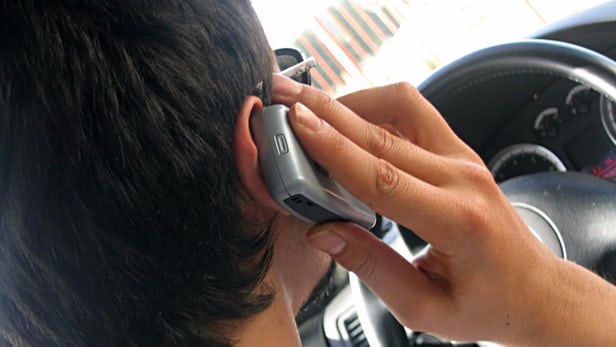Beginning January 1, 2017, California drivers will no longer be allowed to hold their phones while driving for any reason. Drivers cannot talk, text, take photos or videos, or use the phone as a GPS. They will only be allowed to use the device in hands-free mode.

But a new study conducted out of the Queensland University of Technology (QUT) in Australia proposes that the law doesn’t go far enough, as hands-free usage is not any safer. While the dangers of texting and driving have been well-established, it’s been widely accepted that making calls hands-free is a safe option because the driver’s hands are free to control the car. However, the road safety study conducted at QUT states that the mental distraction is just as significant during calls on both hands-free and handheld devices.
The study led by Dr. Shimul (Md Mazharul) Haque used the Center for Accident Research and Road Safety — Queensland (CARRS-Q) driving simulator to calculate the effects of using a mobile phone on reaction time and driving performance.
“We took a group of drivers and exposed them to a virtual road network, which included a pedestrian entering the driver's peripheral vision from a footpath and walking across a pedestrian crossing,” Dr. Haque said. “We then monitored the driver's performance and reaction times during hands-free and handheld phone conversations and without.”
Driver reaction time using either a handheld or hands-free mobile phone was over 40% longer than those not using a device at all. If a vehicle is traveling at 40 km/h (25 mph), this could result in a delayed response of approximately 11 m (36 ft). The increased brain power needed to hold a conversation can alter a driver’s visual scanning pattern.
According to Dr. Haque, when extra information is sent to the brain during conversation, it adjusts by not sending visual information to the working memory. Distracted drivers look at, but don’t necessarily “see,” individual objects. He notes that conversations on a phone and passengers in the car differ, because the passenger accounts for the driving environment and stops talking when approaching a complicated driving situation.
The study also revealed that reaction times for a person with a provisional driver’s license is doubled compared to one with a full license. Similarly, drivers having a phone conversation brake more abruptly, leading to risks in vehicles.
The best solution to the issue of driving and using your phone may be the use of autonomous vehicles, but then again, that could open an entirely new debate.
Source: New Atlas
Advertisement
Learn more about Electronic Products Magazine





